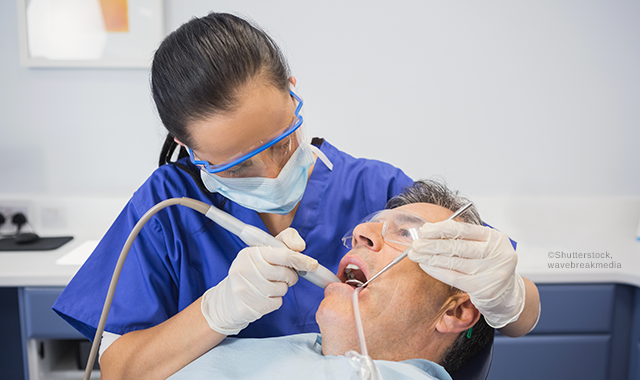How new technology will impact treatment planning
With digital impressions going mainstream, a whole new world of opportunities is about to open up for dentists and patients.

One of the true game changers in our profession as of late has been the development of cone beam computed tomography (CBCT). That combined with the market penetration of digital radiography, which is now well over 50 percent, has created an environment of visual co-diagnosis that has dramatically changed the way we communicate with patients and the way we diagnose.
I’m a huge supporter of visually-based technologies for the simple reason that human beings rely heavily on their sense of sight. Whether it’s computer images, photos or working under high magnification, the ability to see well gives you the ability to “do” well.
Combining multiple factors of visually-based practice systems allows for greater efficiency of treatment and greater predictability of outcomes.
Read more: What do dental teams REALLY think of digital impressions?
For the past two or three years, I’ve been encouraging development of integration between cone beam scans and the file sets created by chairside digital impression systems. I’d be thrilled to see a continually updated patient where an initial 3D scan is taken and then updated with data from the digital impression system whenever a new chairside scan is done. Imagine keeping a 3D digital record of your patients that’s constantly updated to reflect their current situation. That would be incredible!

However, another new process has caught my eye as of late. Many of you have probably heard of VR, or virtual reality. The idea is to wear goggles that create a “virtual world” where it feels like you’re actually inside a video game. VR looks to be one of the next big things in the gaming world, for real estate tours, and potentially for education and tourism. However, short of perhaps patient education, VR doesn’t have much of a potential in the dental industry for the foreseeable future.
While VR my not have dental applications on the immediate horizon, a technology referred to as AR just may hold promise. AR stands for “augmented reality” and is defined by whatis.com as “The integration of digital information with the user's environment in real time. Unlike virtual reality, which creates a totally artificial environment, augmented reality uses the existing environment and overlays new information on top of it.”
Let’s stop and consider that for a moment. Imagine the possibility (as I mentioned above) of the merged cone beam and digital impression files. Now, let’s imagine that you’re prepping for a bridge on teeth #4-6. You prep the teeth, scan the case with the acquisition unit and then merge the clinical scan with the cone beam data. At this point the doctor can don the AR goggles that are loaded with your patient’s digital 3D data, and when you look at the patient, you’ll actually see the 3D rendering “on the patient.” This allows you to check for proper clearance and proper draw.
Trending article: The true science fiction of future dentistry
Next, the prosthesis can be created virtually utilizing design software and once again be merged with the previous 3D rendering. Once the prosthesis is designed and merged, the prosthesis can be analyzed as it will appear in the mouth. Utilizing AR, the bridge can now be viewed as if it’s cemented. Since AR superimposes digital data over real world images, the occlusal scheme can be worked out including (in this case) canine guidance. All of this can be done virtually, allowing the doctor to work out the entire fit and occlusal scheme prior to having the bridge created in the lab or in the office.
I feel that the world of digital impressions is about to explode in the U.S. market. We’ve seen steady growth, but with advances in technology, we’re about to go mainstream. That will spur further development in the use of 3D and will provide a major positive disruption.